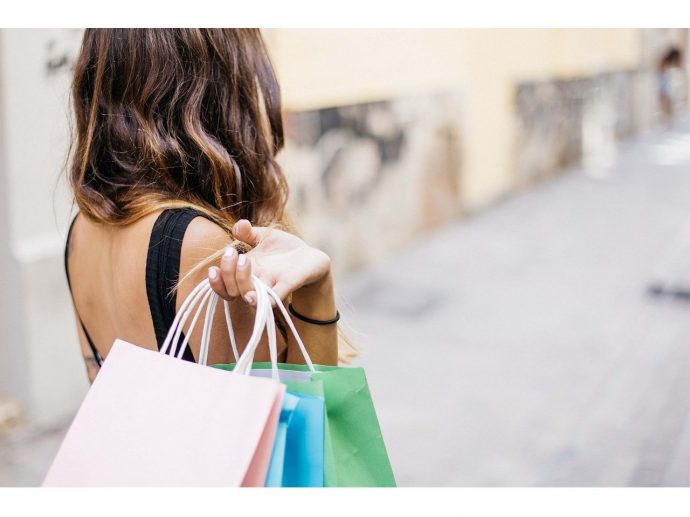Categories more
- Adventures (17)
- Arts / Collectables (15)
- Automotive (37)
- Aviation (11)
- Bath, Body, & Health (77)
- Children (6)
- Cigars / Spirits (32)
- Cuisine (16)
- Design/Architecture (22)
- Electronics (13)
- Entertainment (4)
- Event Planning (5)
- Fashion (46)
- Finance (9)
- Gifts / Misc (6)
- Home Decor (45)
- Jewelry (41)
- Pets (3)
- Philanthropy (1)
- Real Estate (16)
- Services (23)
- Sports / Golf (14)
- Vacation / Travel (60)
- Watches / Pens (15)
- Wines / Vines (24)
- Yachting / Boating (17)
How to Increase Sales in Retail Clothing Stores
Published
10/07/2025Boosting sales in a clothing store requires more than just having stylish merchandise on the racks. It demands strategic thinking, customer-focused service, and an environment that encourages purchases. The competition in retail is fierce, and standing out takes more than foot traffic. It takes purpose-driven execution.
Retailers who see results often start with the basics, products that customers genuinely want. Items like Conte warm tights and leggings not only appeal to comfort and fashion trends but also drive repeat visits during colder seasons. When you pair the right inventory with thoughtful store strategies, your retail space can grow into a high-performing sales machine.
Focus on Visual Merchandising That Converts
The way your store looks directly affects buying behavior. Shoppers make decisions quickly, often based on first impressions. Your window display should tell a story. It should reflect current trends, evoke a mood, or highlight a key product line.
Inside the store, layout matters. Clothing should be grouped by style, occasion, or color theme, not crammed together. Eye-level shelving, clean sightlines, and well-lit sections can guide people through the space naturally. Use mannequins or styled displays to show complete outfits, which encourages upsells.
Change your visual merchandising often. Seasonal displays, limited collections, or back-to-school layouts keep the environment fresh. When customers see newness, they’re more likely to browse and buy.
Train Staff to Sell Without Pressure
Sales teams should feel like personal stylists, not pushy salespeople. Train your staff to greet customers with warmth and then step back, giving them space. When it’s time to help, they should know how to ask the right questions. What brings the customer in today? Are they shopping for a specific event?
Team members should understand the inventory well enough to make suggestions confidently. If a customer is trying on a jacket, a good associate might offer a scarf or skirt that complements it. Small suggestions feel helpful when they’re based on genuine style advice.
Finally, ensure your team is comfortable using technology. Mobile POS, inventory checks, and online order assistance enable them to assist customers beyond the in-store experience. An empowered employee is more effective and trusted, which in turn leads to more sales.
Build Promotions That Feel Personal
Discounts work, but personal promotions work better. Use your point-of-sale system or customer database to track shopping habits. Send offers based on actual purchases like a loyalty coupon for someone who regularly buys tights or a birthday discount tailored to their favorite brand.
You can also offer in-store-only promotions that create urgency. Flash sales, limited-time bundles, or gift-with-purchase events drive impulse buys. Promote these through social media and email with targeted messaging.
Collaborate with micro-influencers or local creators to build buzz. If your store hosts a styling session or exclusive collection preview, invite a niche fashion voice to attend and post. Their audience becomes your audience.
Improve Inventory Based on Performance Data
Inventory decisions shouldn't rely solely on instinct. Look at your sales data: What moves fast? What sits too long? Identify patterns by season, size, color, and style.
Stocking up on staples like warm tights and leggings during the right season makes sense when you’ve seen the proof in sales. But knowing when to pivot is just as important. If certain items are underperforming, replace them with new designs or move them to a clearance area to free up shelf space.
Use real-time data tools, if available, to track what’s working. Smart inventory systems can even suggest reorder points based on trends. A well-managed stockroom leads to fewer markdowns, better margins, and fewer missed opportunities.
Create an Experience, Not Just a Store
Shoppers today want more than a transaction. They want an experience. Small touches can create a memorable visit, like a water station, a comfy seating area, or upbeat music that matches the brand vibe.
Offer fitting room perks, such as personalized fitting help, better lighting, and a “try-on zone” with mirrors, accessories, or alternate sizes ready. Customers who feel comfortable trying things on are more likely to buy.
Loyalty programs, SMS reminders, and events like member-only shopping nights build community. If customers see your store as part of their lifestyle, they’ll return. And return customers are more valuable than new ones.















